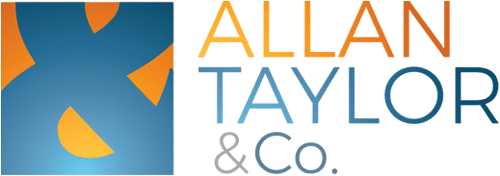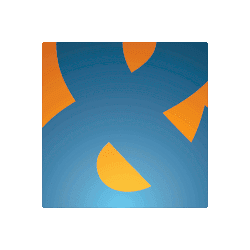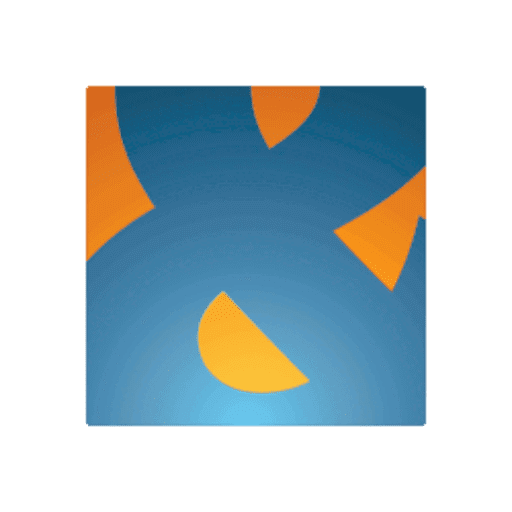There are two schools of thought around using a 401(k) to buy a business. Some see it as making a risky proposition even riskier: Taking on the risk of owning a business – often for the first time – while simultaneously risking all or part of your retirement savings. Others see it as a clever way to fund the purchase price of a business while avoiding the burdens associated with getting a business loan.
However you look at it, using a 401(k) to buy a business requires a thorough understanding of the risks, the benefits, and the details of how this business financing option works.
In this article, we’ll provide an overview of what using a 401(k) to buy a business entails. We’ll also discuss some of the pros and cons of using the 401(k) rollover method to buy an existing business.
3 Ways of Using a 401(k) to Buy a Business
There are three ways to use retirement funds from your 401(k) to buy a business. While you can also use any of these methods to fund a business startup, this article will focus on buying an existing business.
Using a 401(k) to buy a business can be done in one of three ways:
- Distribution: Cash out in full or take a partial distribution
- Loan: Borrow against the funds in your retirement account
- Rollover: Roll over funds into another qualified retirement plan
The first two methods come with limitations on the amount of money you can use ($50,000), as well as taxes and penalties for early withdrawal. These could be considered the methods of last resort. We don’t see these first two methods used to purchase businesses of the size that Allan Taylor & Co. represents in the lower middle market (i.e., average purchase price ranges between $1M and $10M).
We do, however, see the third option – a 401(k) rollover – on a fairly regular basis. As with many things, it’s usually wealthier individuals who have this financing option available for funding all or a portion of the purchase price of a business. The higher your net worth, the more likely it is that you have significant retirement assets, as well as a higher tolerance for putting it at risk.
In this article, we’ll focus on the rollover method of using a 401(k) to buy an existing business.
How a 401(k) Rollover Works for Buying a Business
The process of using 401(k) or individual retirement account (IRA) funds to buy a business typically goes by one of two names: a Rollover for Business Start-ups (ROBS), or a Business Owners Retirement Savings Account (BORSA). The primary providers that facilitate ROBS are Guidant Financial and Benetrends, while DRDA offers their own managed BORSA program.
Financing the purchase of a business is never a straightforward affair. Adding a 401(k) rollover to the process adds an extra layer of complexity. Retirement plans are subject to Employee Retirement Income Security Act (ERISA) and Internal Revenue Service (IRS) regulations. As such, setup and management of the new business and its retirement account must be done correctly.
Let’s be clear: Setting up a ROBS on your own is a terrible idea! Hire a professional firm like one of the providers mentioned above to help you initiate the process and keep it compliant as long as you own the new company.
Determine if your 401(k) or retirement plan is eligible for a ROBS rollover
There are five primary eligibility requirements for using 401(k) or IRA funds to buy a business using the rollover or ROBS method:
- You must have an eligible retirement account. These include:
- 401(k)
- 403(b)
- TSA
- SEP
- Keogh
- IRA (Traditional IRA’s only; Roth IRA’s are not eligible)
- It must be allowed by the administrator of your existing retirement plan. You may not be able to initiate a ROBS rollover while you are still employed.
- Your retirement account must have a minimum of $50,000 to be rolled over.
- You (the business owner) must be an employee of the business, and pay yourself an adequate salary.
- The new business entity must be structured as a C corporation.
If your existing retirement plan meets all of the eligibility requirements, there are four main steps that will establish the rollover and business acquisition.
Form a C corporation for the new business
A C-corp is the only entity that can be used to set up a ROBS plan. Why? Because it is the only entity that can sell shares to a retirement plan. And selling shares is the only way funds can be released tax-free and penalty-free from your existing 401(k). More common small business structures like a limited liability company (LLC), S corporation, or sole proprietorship cannot be used for a ROBS.
Open a 401(k) or other retirement plan for the business
Choosing the right plan will depend on several factors, including the number of employees at the business and how they are compensated. Plan options could include a 401(k), a profit-sharing plan, or a defined benefits/contribution plan. Roth IRA accounts do not qualify for ROBS. Work with your ROBS provider and CPA to choose the right plan for your business. Your provider should also be able to recommend an ongoing plan administrator.
Roll over funds from your 401(k) to the new retirement plan
After you’ve set up the C-corp and established a retirement plan, you’re ready to roll over funds from your existing 401(k) to the new retirement plan. Your ROBS provider will facilitate this process.
Issue ownership shares (stock) in the new business
Next, the new C-corp will issue shares. The number of shares the business issues will depend on whether you plan to raise more capital in the future. Regardless, it is not necessary to issue 100% of the shares during this initial round of funding. The new retirement plan will use the funds from your old 401(k) to purchase shares of the new C-corp.
At this point, the C-corp now has the rolled over funds at its disposal.
Advantages of using a 401(k) to buy a business
While the process may seem a bit cumbersome, there are several advantages to using a 401(k) to buy a business:
- No debt: It can eliminate the need for bank financing. That means no credit check or hit to your credit score, and no putting up your house as collateral. It can also keep your new company debt-free when you initially take over. (NOTE: You can also use a rollover in conjunction with an SBA loan. Talk to your ROBS provider about this option.)
- More cash: All things being equal, there should be more cash in the business (i.e., the costs of maintaining the retirement plan should be much less than the expense of loan repayment and interest).
- Grow your retirement savings: Your retirement nest egg can continue to grow along with the business.
- No tax penalties: The rollover does not trigger a taxable event, so there are no early withdrawal penalties.
- Higher success rate: One of the main ROBS providers claims that their client’s businesses are twice as likely to still be in business after four years.
Disadvantages of using a 401(k) to buy a business
Using a 401(k) to buy a business also comes with a few caveats. Buyer beware of the following:
- Costs: There are upfront costs required to set up and initiate a ROBS, as well as ongoing retirement plan administration fees.
- Compliance: Using the ROBS method to buy a business means adhering to strict ERISA and IRS regulations. Failure to submit correct filings annually can trigger an audit. As mentioned above, you’ll want to hire qualified advisors to make sure the business and retirement plan remain in compliance.
- Risk: If the business fails, your retirement money evaporates with it.
A Few Words About Small Business Acquisition Financing in General

Many people assume that buying a small business is analogous to buying a house. The reality is that there are more differences than similarities, and financing options are no exception.
Like buying a house, the purchase of a business is typically financed by using a combination of debt and equity (the similarities end here). The buyer’s cash is considered an equity injection. The balance of the purchase price typically comes from the buyer assuming debt combined with some amount of seller financing.
Regarding the latter, it is customary for the seller to hold back a portion of the purchase price in the form of a promissory note. The typical amount we see is between 10% and 20% of the purchase price. If the buyer’s financing includes a Small Business Administration (SBA) guaranteed loan, the seller will be required to hold back a portion of the purchase price. Why? Because it shows that the seller has faith in the business continuing successfully under new ownership – precisely what the lender and SBA want.
Buyers are often surprised at how hard it can be to find a small business lender to help them fund the purchase. Many small businesses have plenty of cash flow, but little in the way of hard assets to collateralize a traditional loan. Buyers need to find experienced “cash flow lenders” to get a deal financed. Many banks claim they are small business lenders, but do little (if any) cash flow lending for small business acquisitions.
This is where the SBA comes in. They will guarantee the bank’s loan in the event that the buyer defaults. SBA guaranteed loans can be a great way to finance the purchase of a small business, but they come with some strings attached, and extra paperwork. Among other things, the SBA will require an independent valuation, and the lender will need to satisfy their own small business due diligence requirements.
Given all of the above, using a 401(k) rollover can be an attractive financing option if it reduces or completely eliminates the need for getting a traditional bank loan.
What Happens When You’re Ready to Sell the Business?
There are a number of issues associated with selling a C corporation, although the big one is double taxation when the deal is structured as an asset sale. Talk to your ROBS provider, your CPA, and a business broker or mergers and acquisitions (M&A) advisor well in advance of selling the business.
In addition to the IRS putting certain restrictions on the sale of a C-corp, your ROBS provider may also have their own requirements for a sale. We ran into an instance where a business owner was told by their ROBS provider that if the business was sold in an asset sale, the deal could not include any seller financing. In other words, the buyer would have to completely cash out the seller at closing. The result of this restriction could have been a very small pool of willing buyers, as well as a reduction in purchase price.
Small business sales are always complex transactions. Be aware that the sale of a C-corp started with a ROBS adds an extra dimension.
Is Using a 401(k) to Buy a Business a Good Idea?
We’ve all heard the advice from financial planners: Diversify your portfolio. In other words, don’t put all your eggs in one basket. But if you’re talking about building serious wealth, that age-old advice may be leaving something out.
I once heard a financial planner who worked exclusively with high net worth clients – many of them successful business owners – say the following:
“You get rich by owning a lot of one thing. You stay rich by owning a little of many things.”
Most successful entrepreneurs get wealthy by initially bending the rules, taking risks, and doubling down on one investment: their own business. No matter how you end up funding the purchase of a business, work with experienced advisors to understand the pros and cons of all available financing options.
Barbara Taylor is the co-founder of Allan Taylor & Co. You can connect with her on Twitter @ballantaylor and LinkedIn.



